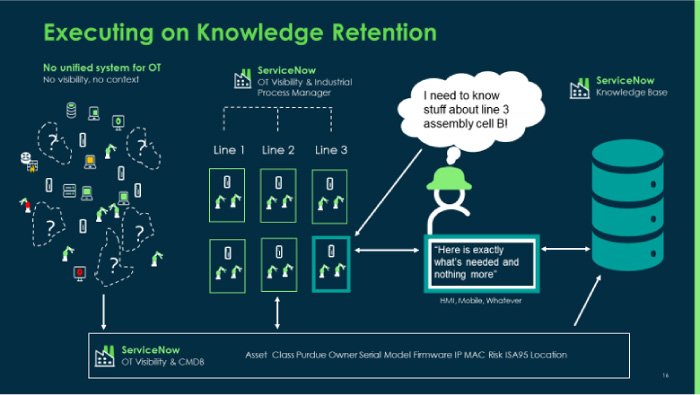
Too often, organizations characterize their OT investment as “insurance", protection against a cyber event that may or may not happen at some point in the future. The insurance narrative is valid but not complete. It is not an effective way to gain the broad sponsorship needed for a successful OT program. Besides the board of directors and the security team, nobody gets too excited about championing an investment based on an unknown future event, even if the investment mitigates a critical risk.
If you want OT to succeed, you must get your organization aligned on the importance of OT management beyond the security use case.
You must deliver a truthful narrative about how trusted OT data can be leveraged daily as a primary driver for the operational priorities of safety, quality, employee experience, and productivity.
The place to start is to ask, "What are the priorities of the operations team?" I consistently see a strong link between operational priorities and the need for trusted data about connected devices. This link is key to unlocking alignment because most OT initiatives are being funded (at least initially) by the CISO, and these programs require the sponsorship of Operations Leadership to be successful, even at the pilot stage.
Setting the foundation to solve an operational priority goes a long way toward creating much-needed operational champions for a security-driven OT program.

“Knowledge Retention” is a great example of the synergy between OT management and operational priorities. I have not seen your team’s 2024 operational objectives, yet I would be willing to wager that “Knowledge Retention” is on your team’s list and is near the top. Knowledge can show up in several forms, from enabling new employees to capturing the accumulated knowledge of those about to retire and everything in between.
Connecting OT data and knowledge articles enables a step change in “knowledge retention” maturity.
The operations team likely has a library of existing knowledge articles; these articles will become more effective when contextualizing the asset, location, or service data you are collecting to manage OT. In ServiceNow, this linking is accomplished in the Industrial Process Manager, immediately unlocking the potential for knowledge automation throughout your operation.
Get the foundational data in place, and ServiceNow can automatically present an operator with the knowledge articles they need without them having to do any searching.
Consider what ServiceNow has done utilizing knowledge retention to reduce the cost and MTTR associated with IT Service Management and what the future holds as AI capability continues to grow in the platform.
Simply put, these benefits result from putting foundational asset data (CIs) into a unified system of record (CMDB) and linking incident data and knowledge articles to the assets and their associated services.
Shouldn’t we expect the exact same benefits for operations?
These Stories on ServiceNow